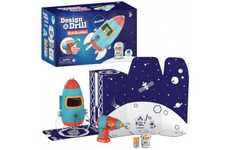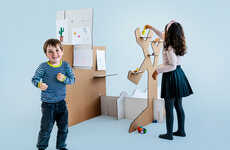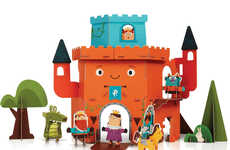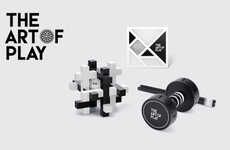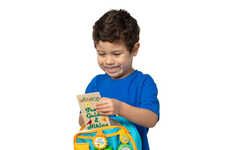
The Play Pack by Meg Czaja Encourages Unstructured Creativity and Imagination
Meghan Young — September 22, 2014 — Life-Stages
References: portfolios.pratt.edu & core77
When it comes to games and toys for children, many designers and companies rely on guides and instructions to tailor the way they are interacted with; the Play Pack is in direct opposition of this modern model.
Designed by Meg Czaja, a Pratt MID candidate, the Play Pack was conceived after a disillusioned trip to the Lego Headquarters. She shares, "One of the speakers, whom I believe worked in marketing, said that children in the U.S. don't know how to use Legos without instructions, which is why they are now sold in sets. Rather than trying to challenge the notion, this mentality was driving their current designs—in lieu of a child's capacity to create. I found it to be incredibly troublesome." Play Pack hopes to challenge the notion by providing a platform for unstructured creativity and imagination.
Designed by Meg Czaja, a Pratt MID candidate, the Play Pack was conceived after a disillusioned trip to the Lego Headquarters. She shares, "One of the speakers, whom I believe worked in marketing, said that children in the U.S. don't know how to use Legos without instructions, which is why they are now sold in sets. Rather than trying to challenge the notion, this mentality was driving their current designs—in lieu of a child's capacity to create. I found it to be incredibly troublesome." Play Pack hopes to challenge the notion by providing a platform for unstructured creativity and imagination.
Trend Themes
1. Unstructured Creativity - The trend of encouraging unstructured creativity in children's games and toys presents opportunities for disruptive innovation in the development of open-ended play experiences.
2. Imagination-focused Design - The trend of designing toys and products that prioritize imagination over step-by-step instructions creates opportunities for disruptive innovation in the toy industry by offering alternative play experiences.
3. Breaking Guided Play Expectations - The trend of questioning and challenging the reliance on guided play in children's toys and games opens up disruptive innovation opportunities to create products that empower children to explore their own creativity without instructions.
Industry Implications
1. Toy Manufacturing - Toy manufacturers can seize the disruptive innovation opportunity in the unstructured creativity trend by developing products that promote open-ended play experiences, sparking imagination in children.
2. Education Technology - In the realm of education technology, disruptive innovation can occur by creating interactive tools and platforms that encourage unstructured creativity and imagination, breaking away from instruction-based learning models.
3. Design and Innovation Consulting - Design and innovation consulting firms can leverage the disruptive innovation potential in breaking guided play expectations trend by assisting companies in reimagining and redesigning their products to prioritize unstructured creativity and imagination.
3.8
Score
Popularity
Activity
Freshness


